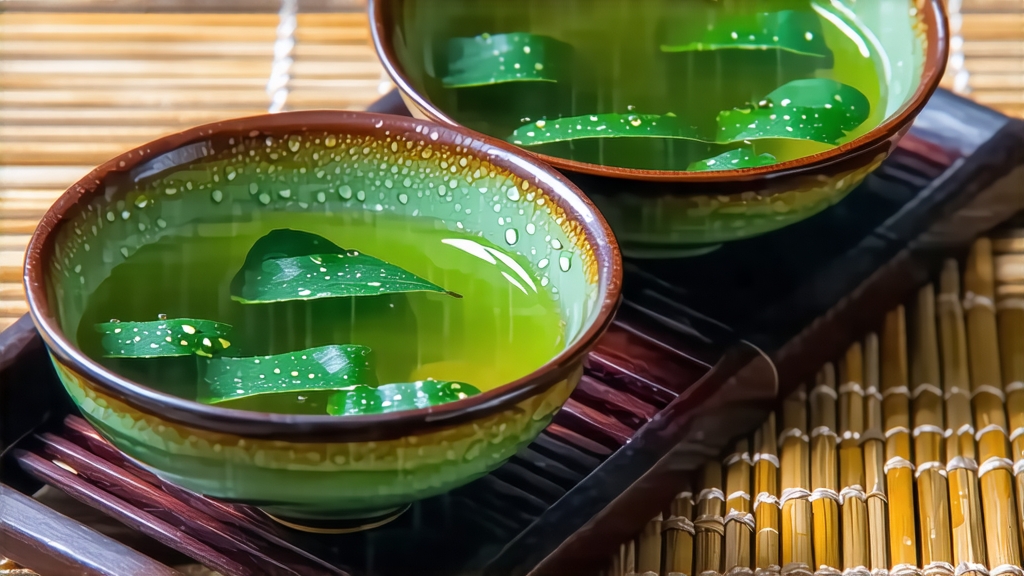
Alishan High-Mountain Oolong is not a single cultivar but a collective name for lightly oxidized, high-altitude teas grown along the forested ridge of Taiwan’s central mountain range. To international drinkers it is often the first “green oolong” they encounter—jade-colored pearls that unfurl into whole, serrated leaves, releasing a perfume alternately described as alpine orchid, sweet cream, and fresh-cut sugarcane. Yet behind the romantic fragrance lies a tight interplay of geography, horticulture, and craft that has evolved for more than two centuries.
Historical roots
Oolong technology migrated from Fujian’s Wuyi cliffs to northern Taiwan during the early 1800s, when settlers crossed the strait with Qingxin (Green Heart) cuttings tucked into bamboo tubes. The cultivar found a second home above 1,000 m in Chiayi County, where the Alishan massif traps monsoon clouds between red cypress and camphor forests. By the 1980s, government cupping competitions had turned “Alishan” into a protected appellation, and small family farms began selling their spring and winter lots at prices rivaling top Burgundy crus. Today, the name signals both elevation (minimum 1,000 m) and processing style: 15–25 % oxidation, zero roasting or a very light charcoal “wake-up” of less than four hours.
Terroir and cultivars
The classic bushes are Qingxin Oolong, a strain selected for slow growth and high amino acids. At 1,200–1,500 m, nighttime temperatures can drop to 8 °C even in May; the stress concentrates geraniol and linalool, the molecules responsible for milky florality. Morning fog filters ultraviolet light, thickening leaf cuticles and creating the signature “gum” that allows repeated rolling without tearing. Farmers also plant Jinxuan (milk oolong) and the newer Tsui Yu, but purists insist only Qingxin grown inside the Alishan National Scenic Area—Shizhuo, Zhonghe, and Teafang villages—deserves the label.
Plucking calendar
The highest grades are picked in late March and early October, when the diurnal swing exceeds 12 °C. Standard is “one bud, three leaves” rather than the two-leaf norm of lower elevations; the extra mature leaf contributes polysaccharides that translate into mouth-coating sweetness. Picking starts at dawn and must finish before 10 a.m., when rising temperature activates bitter catechins. Leaves are trucked within thirty minutes to on-site withering sheds perched on stilts above the cloud line.
Crafting the leaf
- Solar withering: 20–30 min of gentle sun on bamboo trays to reduce moisture to 70 %.
- Indoor withering & tossing: 6–8 h in 20 °C rooms where workers toss the leaves onto mesh screens every hour, bruising edges just enough to trigger partial oxidation. The rhythm is hypnotic—shake, rest, repeat—until the leaf emits a ripe pineapple note.
- Fixation: a 3-min blast at 280 °C in a tumbling drum arrests oxidation at the desired 20 % mark.
- Rolling: the hot leaves are wrapped in cotton cloth and compressed into balls by hydraulic plates, a Taiwanese innovation that replaces the foot-rolling once seen in Fujian. Pressure is applied 60–80 times over 90 min, forcing cell sap to the surface and shaping the tight hemisphere.
- Drying: 40 °C hot-air tunnels reduce moisture to 5 %; the leaf is now shelf-stable yet still emerald.
- Optional light roast: some lots receive 70 °C charcoal embers for 90 min to add a whisper of toasted almond; the best sellers in Germany and the United States are unroasted to preserve neon-green liquor.
From farm to cup: storage wisdom
Alishan oolong is best enjoyed within eighteen months of production, but it must rest four weeks after final firing so residual moisture equalizes. Vacuum-sealed, nitrogen-flushed pouches are stored at 4 °C; once opened, the tea should live in an opaque tin inside a wine fridge at 50 % humidity. Unlike pu-erh, it does not improve with age; instead, the orchid bouquet slowly fades into flat grass.
Brewing protocols
Western ratio: 3 g per 250 ml,